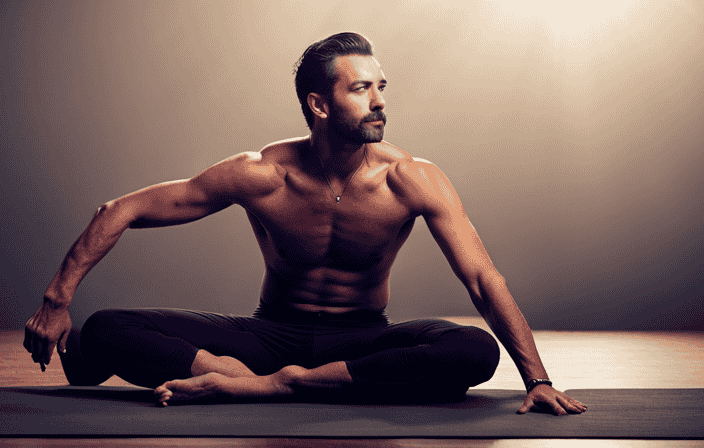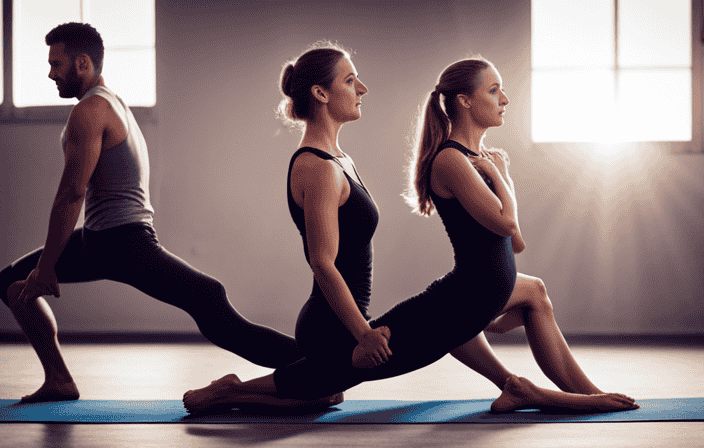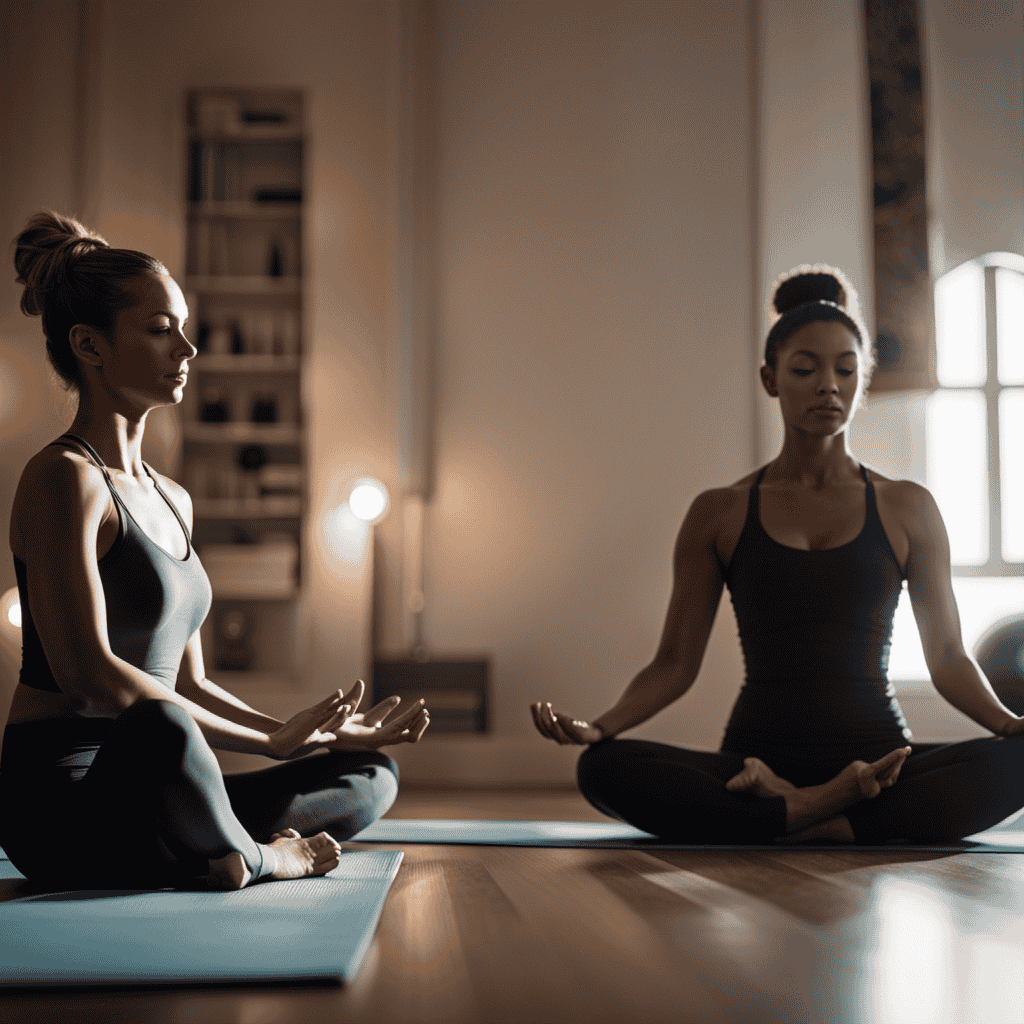Are you aware that engaging in yoga practice can offer a wide range of advantages for your physical and mental health? A research study carried out by the National Center for Complementary and Integrative Health revealed that yoga can assist in reducing stress, enhancing flexibility, and fostering relaxation.
If you’re interested in exploring this ancient practice further, look no further than ‘The Eight Limbs of Yoga: A Comprehensive Guide for All Levels.’ This guide offers a wealth of knowledge on the history, origins, and significance of the eight limbs of yoga, and provides clear instructions and illustrations for incorporating them into your daily life.
Whether you’re a beginner or an experienced yogi, this book is a valuable resource for deepening your understanding and practice of yoga.
Key Takeaways
- The Eight Limbs of Yoga book provides an in-depth look at the eight limbs of yoga, covering their history, origins, and benefits.
- The book shows how to incorporate the eight limbs of yoga into daily life, making it suitable for yoga enthusiasts of all levels.
- When looking for a yoga book, it is important to find one that has clear instructions and illustrations for practicing yoga correctly, along with a variety of poses for different levels.
- To learn more about yoga, you can attend a yoga class, read a book about yoga, search the internet for information, or ask a friend who practices yoga. There are multiple ways to expand your knowledge on the subject.
What are the limbs?
The Eight Limbs of Yoga book provides an in-depth look at the eight limbs of yoga. It explains what they are and how they can be incorporated into daily life. The limbs serve as a framework that guides practitioners on their yoga journey. They offer a comprehensive approach to physical, mental, and spiritual well-being. Each limb represents a different aspect of the yogic path. This includes ethical guidelines, self-discipline, physical postures, breath control, and meditation. By understanding and practicing the eight limbs, individuals can cultivate a balanced and harmonious life.
This book not only explains the significance of each limb but also provides practical tips on how to integrate them into daily routines. It is a valuable resource for both beginners and experienced yogis. Whether you are just starting out or have been practicing for years, this comprehensive guide offers valuable insights and guidance. It shows you how to incorporate the eight limbs into your yoga practice and daily life.
Benefits and Origins
I personally find it fascinating to learn about the origins and numerous benefits of practicing yoga. Understanding the history of yoga gives us a deeper appreciation for this ancient practice, while exploring its benefits helps us see how it can positively impact our lives. The origins of yoga can be traced back thousands of years to ancient India, where it was developed as a spiritual and physical discipline. It has since evolved into a holistic practice that promotes physical strength, flexibility, and mental well-being.
The table below highlights some key benefits of practicing yoga:
| Physical Benefits | Mental Benefits | Overall Benefits |
|---|---|---|
| Increases flexibility and strength | Reduces stress and anxiety | Promotes overall well-being |
| Improves posture and balance | Enhances focus and concentration | Boosts self-confidence |
| Enhances respiratory function | Improves sleep quality | Inspires a sense of mindfulness |
As you can see, practicing yoga offers a wide range of benefits for both the body and mind. Whether you’re a beginner or an experienced practitioner, incorporating the eight limbs of yoga into your daily life can help you achieve a greater sense of harmony and balance.
Incorporating into Daily Life
To fully integrate yoga into my daily routine, I prioritize regular practice and incorporate its principles into my diet, breathing exercises, and meditation. Yoga is not just a physical practice on the mat; it is a way of life that extends beyond the yoga studio. By incorporating the eight limbs of yoga into my daily life, I am able to cultivate a sense of balance, mindfulness, and overall well-being.
In terms of diet, I strive to nourish my body with wholesome, plant-based foods that provide the necessary nutrients for my practice. I pay attention to the quality and source of my food, opting for organic and locally sourced options whenever possible. This helps me maintain a clear and focused mind during my yoga practice.
Breathing exercises, or pranayama, play a crucial role in my daily routine. I practice various breathing techniques, such as deep belly breathing and alternate nostril breathing, to calm my mind, reduce stress, and enhance my overall sense of relaxation.
Meditation is another key component of my daily yoga practice. I set aside time each day to sit in stillness, focusing on my breath or a specific mantra. This helps me cultivate a deeper connection with myself and the present moment, allowing me to approach each day with a sense of clarity and purpose.
By incorporating the principles of yoga into my daily life, I am able to experience its transformative benefits both on and off the mat. It has become a guiding philosophy that helps me navigate the challenges of everyday life with grace and ease.
Choosing a Yoga Book
When choosing a yoga book, it’s important to consider the qualifications and expertise of the author or instructor. Look for a book written by a qualified yoga instructor or expert who can provide accurate and reliable information. Additionally, consider the content of the book and whether it aligns with your specific needs and goals.
Here are three key factors to keep in mind when selecting a yoga book:
-
Clear and Detailed Instructions: Look for a book that provides clear instructions and illustrations for practicing yoga correctly. This will ensure that you can learn the poses accurately and avoid any potential injuries.
-
Variety of Poses: A good yoga book should include a variety of poses, catering to different levels of experience. It should have beginner, intermediate, and advanced poses, allowing you to progress at your own pace.
-
Comprehensive Information: Seek a book that goes beyond just poses and includes tips and advice on diet, breathing techniques, and meditation. This comprehensive approach will help you deepen your understanding of yoga and its benefits.
By considering these factors, you can find a yoga book that suits your needs and helps you enhance your practice.
Learning More about Yoga
Exploring different resources like books, classes, and online research can provide a deeper understanding of yoga.
When it comes to learning more about yoga, there are various avenues to explore. Attending a yoga class is a great way to learn firsthand from an experienced instructor who can guide you through the poses and provide valuable feedback.
Reading a book about yoga is another excellent option, as it can offer in-depth knowledge on the history, origins, and benefits of yoga.
Additionally, searching the internet for information can lead you to articles, videos, and tutorials that can enhance your understanding.
Lastly, asking a friend who practices yoga can provide personal insights and recommendations.
By utilizing these different resources, you can expand your knowledge and enhance your yoga journey.
Best Poses for Beginners
I found some great beginner yoga poses that are perfect for starting my yoga practice.
As a yoga enthusiast myself, I understand the importance of starting with basic poses to build a strong foundation.
Downward facing dog is a popular and effective pose for beginners as it stretches the entire body and helps improve flexibility.
Cat-cow pose is another great option as it gently warms up the spine and releases tension in the back.
Mountain pose is a simple yet powerful pose that helps improve posture and balance.
These poses are just the beginning, and as I progress in my practice, I can gradually incorporate more challenging poses such as crow pose and headstand.
Remember, it’s important to listen to your body and work at your own pace.
With dedication and consistency, I am excited to see the progress I can make on my yoga journey.
Frequency of Practice
To achieve my yoga goals and maintain a consistent practice, it’s essential to determine the frequency that best fits my schedule and objectives. Here are three key considerations when deciding how often to practice yoga:
-
Time availability: Assessing my schedule and commitments will help me determine how many times per week I can realistically dedicate to yoga. If I have a busy schedule, I may start with 1-2 sessions per week and gradually increase as I become more comfortable and efficient in my practice.
-
Goals and desired outcomes: Understanding my goals will guide the frequency of my yoga practice. If I aim for weight loss or improved flexibility, a more frequent practice of 3-5 times per week may be beneficial. However, if I prioritize relaxation and stress reduction, practicing yoga 1-2 times per week may be sufficient.
-
Personal preferences and enjoyment: It’s important to find a balance between challenging myself and enjoying the practice. I will consider what feels right for my body, ensuring that I don’t push myself too hard or neglect my practice altogether. Listening to my body’s needs will help me maintain a sustainable and enjoyable yoga routine.
By considering these factors, I can establish a frequency of practice that supports my goals, fits into my schedule, and allows me to fully experience the benefits of yoga. Remember, it’s always important to listen to my body and make adjustments as necessary.
Considering my goals, schedule, and personal preferences, I can establish a suitable frequency for my yoga practice.
As someone who wants to achieve weight loss and improve flexibility, I recognize the importance of regular practice. Attending classes initially helped me learn the basic poses and get a feel for yoga. Now that I have mastered the basics, I can practice at home.
Based on my research and experience, I have found that practicing yoga 3-5 times per week is ideal for achieving my goals. This frequency allows me to maintain consistency and see progress in my weight loss journey and increased flexibility.
However, I understand that everyone’s schedule and goals may be different, so it is important to listen to your body and adjust the frequency accordingly.
Frequently Asked Questions
What are the different limbs of yoga and how do they contribute to the practice?
The different limbs of yoga are an integral part of the practice. They include ethical guidelines, physical postures, breath control, withdrawal of senses, concentration, meditation, and ultimate realization. Each limb contributes to the overall well-being and spiritual growth of the practitioner.
Are there any specific health benefits associated with practicing the eight limbs of yoga?
Practicing the eight limbs of yoga offers numerous health benefits. It improves flexibility, strength, and balance, reduces stress, enhances mental clarity, and promotes overall well-being. Regular practice can also alleviate chronic pain and improve cardiovascular health.
Can you provide any practical tips or suggestions for incorporating the eight limbs of yoga into daily life?
Sure, here are some practical tips for incorporating the eight limbs of yoga into daily life: Start by setting aside a specific time and space for your yoga practice. Focus on your breath and practice mindfulness throughout the day. Embrace the principles of non-violence, truthfulness, and contentment in your interactions. Cultivate self-discipline and self-study. Finally, find ways to surrender and connect with something greater than yourself. These practices can help bring balance and harmony to your daily life.
Aside from the criteria mentioned, what other factors should be considered when choosing a yoga book?
When choosing a yoga book, it’s important to consider factors such as the author’s teaching style, the book’s organization and structure, the level of detail provided, and whether it aligns with your personal goals and interests in yoga.
What are some unique or lesser-known ways to learn more about yoga beyond attending classes, reading books, or searching the internet?
One unique way to learn more about yoga is by attending workshops or retreats led by experienced yoga teachers. These immersive experiences provide a deeper understanding of the practice and allow for personal growth and connection with like-minded individuals.
Conclusion
In conclusion, the eight limbs of yoga are a transformative journey towards self-discovery and inner peace. By incorporating these limbs into our daily lives, we can experience the numerous benefits that yoga has to offer. These benefits include increased flexibility, strength, and mindfulness. Whether you are a beginner or an advanced practitioner, this comprehensive guide provides valuable insights and practical tips for deepening your practice.
With clear instructions, illustrations, and a focus on correct alignment, this book is a reliable resource for anyone seeking to expand their knowledge and enhance their yoga journey. Embrace the power of the eight limbs and unlock the full potential of your mind, body, and spirit.









